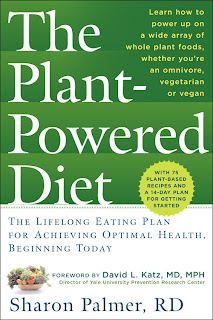Oni Press
Published August 14, 2012
192 pages
Buy here.
I must begin this review by saying that this release is my first ever exposure to the Scott Pilgrim universe. I have never read the comics before now, and due to my lack of interest in seeing anything starring Michael Cera, I skipped the movie. The comics are now being re-released with added color, so I took the opportunity to finally acquaint myself with this series, and I must say I'm glad I did.
Scott Pilgrim didn't strike me as a particularly likable character at first. He is twenty-three, lives in Toronto, and at the start of the comic has just begun dating a high school girl named Knives Chau whom he met on the city bus. He's in a band and lives with/off his gay roommate, Wallace (who apparently ends up "stealing" all of Scott's sister's boyfriends). He seems to lack motivation to really do anything, and I'm not sure if he even has a job. Also, he's a twenty-three-year-old dating a high schooler.
Things start getting interesting for Scott, however, when he begins dreaming about a girl on rollerblades. As it turns out, this girl exists in reality, and her name is Ramona Flowers. After meeting her at a party, Scott starts to date her in addition to Knives. He also begins receiving mysterious messages from a Matthew Patel. In the big climax of this volume, Scott's band plays a show and Matthew Patel shows up to battle Scott to the death. This battle consists of what I think is supposed to be a choreographed musical number that pits Scott and his crew against Matthew and his evil bat-girl minions. Ramona informs Scott that if he wants to continue dating her, he must defeat her seven ex-boyfriends.
The plot is pretty basic, if not a bit bizarre, but the volume serves as a good introduction to all the characters, the setting, and the conflict for the rest of the series. The writing is funny and the color definitely pops, so even though I kind of want to punch Scott in the teeth for being a bit of an idiot, I certainly want to keep reading the fun character interactions, over-the-top action sequences, and (I can only hope) more dance numbers.
If you're new to the series, give it a go with this re-release. If you've already read every issue, at least check out the great color. Volume 2, Scott Pilgrim Vs. the World, is out in color on November 7, 2012.
Rating: 4/5
Published August 14, 2012
192 pages
Buy here.
I must begin this review by saying that this release is my first ever exposure to the Scott Pilgrim universe. I have never read the comics before now, and due to my lack of interest in seeing anything starring Michael Cera, I skipped the movie. The comics are now being re-released with added color, so I took the opportunity to finally acquaint myself with this series, and I must say I'm glad I did.
Scott Pilgrim didn't strike me as a particularly likable character at first. He is twenty-three, lives in Toronto, and at the start of the comic has just begun dating a high school girl named Knives Chau whom he met on the city bus. He's in a band and lives with/off his gay roommate, Wallace (who apparently ends up "stealing" all of Scott's sister's boyfriends). He seems to lack motivation to really do anything, and I'm not sure if he even has a job. Also, he's a twenty-three-year-old dating a high schooler.
Things start getting interesting for Scott, however, when he begins dreaming about a girl on rollerblades. As it turns out, this girl exists in reality, and her name is Ramona Flowers. After meeting her at a party, Scott starts to date her in addition to Knives. He also begins receiving mysterious messages from a Matthew Patel. In the big climax of this volume, Scott's band plays a show and Matthew Patel shows up to battle Scott to the death. This battle consists of what I think is supposed to be a choreographed musical number that pits Scott and his crew against Matthew and his evil bat-girl minions. Ramona informs Scott that if he wants to continue dating her, he must defeat her seven ex-boyfriends.
The plot is pretty basic, if not a bit bizarre, but the volume serves as a good introduction to all the characters, the setting, and the conflict for the rest of the series. The writing is funny and the color definitely pops, so even though I kind of want to punch Scott in the teeth for being a bit of an idiot, I certainly want to keep reading the fun character interactions, over-the-top action sequences, and (I can only hope) more dance numbers.
If you're new to the series, give it a go with this re-release. If you've already read every issue, at least check out the great color. Volume 2, Scott Pilgrim Vs. the World, is out in color on November 7, 2012.
Rating: 4/5









